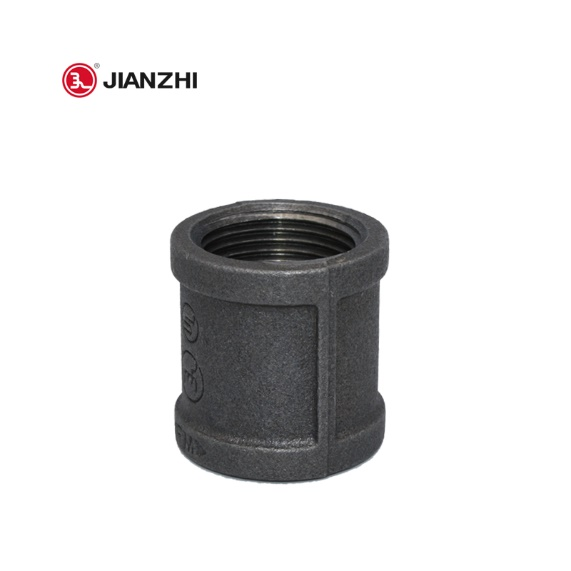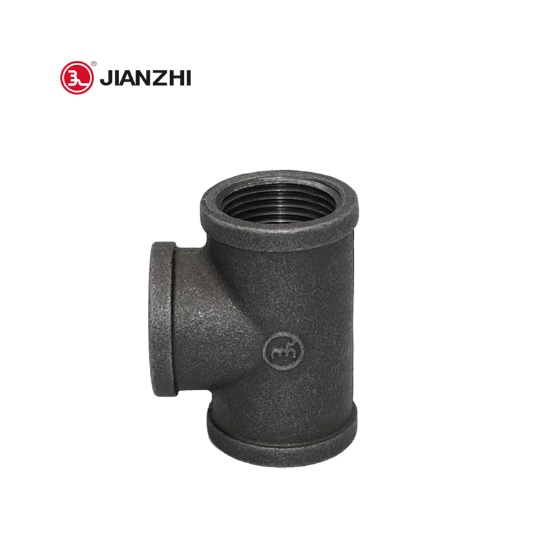Sep. 14, 2024
Pipe fittings play a crucial role in plumbing systems, allowing for the connection of pipes, directing the flow of liquids and gases, and ensuring the overall integrity of various fluid handling systems. The durability of pipe fittings is an essential consideration for engineers, contractors, and property owners, as it affects the longevity and reliability of the entire piping system. A wide range of factors influences the durability of pipe fittings, including the materials used, environmental conditions, installation practices, and maintenance routines. This article delves into the various factors that affect the durability of pipe fittings and explores how to optimize the lifespan of these critical components.

One of the most important factors affecting the durability of pipe fittings is the material from which they are made. Different materials offer varying levels of resistance to corrosion, pressure, temperature, and mechanical stress.
Metal pipe fittings, such as those made from steel, copper, brass, and iron, are commonly used in a variety of industrial, commercial, and residential applications. Metal fittings tend to be durable and can withstand high pressures and temperatures.
Steel: Stainless steel fittings are particularly known for their resistance to corrosion, making them suitable for environments with high moisture levels or where they will be exposed to chemicals. However, carbon steel fittings may be prone to rust if not properly protected.
Copper: Copper fittings have excellent corrosion resistance, especially in plumbing systems for potable water. Their durability is enhanced by their resistance to scaling and bacterial growth.
Brass: Brass fittings are highly durable and resistant to corrosion, often used in plumbing and heating systems. They are also resistant to high temperatures and can be used in systems where thermal stability is essential.
Cast Iron: Cast iron fittings are durable and can last for decades if properly maintained. However, they are prone to corrosion and may require protective coatings to enhance their longevity.
Plastic pipe fittings, including those made from PVC (Polyvinyl Chloride), CPVC (Chlorinated Polyvinyl Chloride), PEX (Cross-linked Polyethylene), and HDPE (High-Density Polyethylene), are commonly used in plumbing and irrigation systems.
PVC and CPVC: These materials offer excellent chemical resistance and are commonly used in systems where corrosion is a concern. CPVC, in particular, has superior temperature resistance compared to standard PVC and is used in hot water systems.
PEX: PEX fittings are flexible, durable, and resistant to scaling and corrosion. They are ideal for residential water supply systems and have a long service life when installed correctly.
HDPE: High-density polyethylene fittings are used in industrial applications where chemical resistance and flexibility are crucial. They are highly resistant to cracking and mechanical damage.
Composite materials combine the best properties of metals and plastics, offering enhanced durability in challenging environments. These fittings are used in applications where both mechanical strength and chemical resistance are required, such as in chemical processing or offshore installations.
The environment in which the pipe fittings are installed plays a significant role in determining their durability. Exposure to harsh conditions can reduce the lifespan of fittings, while a well-maintained, controlled environment can extend their useful life.
Corrosion is one of the most common causes of pipe fitting failure. Metal fittings are particularly vulnerable to corrosion when exposed to water, chemicals, or salt. In environments with high humidity or salty air, such as coastal areas, corrosion can occur rapidly. Corrosion-resistant materials, such as stainless steel or plastic fittings, are often recommended for such environments.
High temperatures can weaken pipe fittings, causing them to become brittle or lose their mechanical strength. For example, metal fittings may expand and contract with temperature changes, leading to cracks or leaks over time. In contrast, plastic fittings can soften or deform under extreme heat. On the other hand, cold temperatures can cause certain materials, such as PVC, to become brittle and crack. Choosing materials with appropriate temperature resistance is essential for ensuring long-lasting durability.
In industrial or chemical processing environments, pipe fittings may be exposed to a variety of chemicals that can degrade the material over time. Corrosive chemicals can erode the surface of metal fittings or cause plastic fittings to weaken. Selecting chemically resistant materials, such as CPVC or PTFE (Polytetrafluoroethylene), is crucial for ensuring the longevity of fittings in these settings.
Pipe systems are often subject to mechanical stresses, such as vibration, pressure surges, or physical impacts. Fittings must be able to withstand these forces without becoming damaged or failing. In applications where high pressure or frequent mechanical shocks are expected, fittings made from materials with high tensile strength and impact resistance, such as steel or reinforced plastics, are typically used.
The way pipe fittings are installed can have a significant impact on their durability. Proper installation ensures that the fittings are secure, aligned correctly, and protected from unnecessary stress.
Misaligned fittings can create stress points in the piping system, leading to premature wear and failure. Careful attention to alignment during installation can reduce the risk of leaks or cracks forming in the fittings.
Using the correct sealing materials, such as Teflon tape or pipe dope, is essential for preventing leaks at the joints. Improper or inadequate sealing can lead to small leaks that, over time, degrade the fittings and lead to failure.
Over-tightening fittings can cause them to crack or become damaged, especially in the case of plastic fittings. On the other hand, under-tightening can result in loose connections that may leak. Following the manufacturer’s recommendations for torque specifications is important for ensuring the longevity of the fittings.

Regular maintenance and inspection of pipe fittings are critical for identifying potential issues before they become major problems. Neglecting maintenance can significantly reduce the lifespan of fittings.
Routine inspections of pipe fittings can help identify signs of wear, corrosion, or leaks. Early detection allows for timely repairs or replacement, preventing more extensive damage to the system.
In systems where debris, sediment, or chemical residues can accumulate, regular cleaning and flushing are necessary to prevent blockages or corrosion. In industrial settings, flushing the system with appropriate cleaning agents can extend the life of the fittings.
Even the most durable fittings will eventually wear out. Replacing worn or damaged fittings promptly is essential for maintaining the integrity of the entire piping system. Neglecting to replace old or degraded fittings can lead to leaks, system failures, or even safety hazards.
The pressure and flow rate of the fluid passing through the pipe system can also influence the durability of the fittings.
High-pressure systems can place significant stress on fittings, especially at the joints. Over time, this pressure can cause fittings to weaken, crack, or leak. Fittings in high-pressure applications must be rated for the specific pressure levels they will encounter and should be regularly inspected for signs of wear.
High flow rates or turbulent flow can cause erosion of the fittings, particularly in metal components. Over time, this erosion can lead to thinning of the material and eventual failure. In systems where high flow rates are expected, selecting fittings with smooth internal surfaces and appropriate flow ratings is essential for minimizing wear.
The durability of pipe fittings is influenced by a variety of factors, including the materials used, environmental conditions, installation practices, and maintenance routines. To ensure the longevity of a piping system, it is essential to choose the right materials for the application, install the fittings correctly, and perform regular inspections and maintenance. By paying attention to these factors, it is possible to extend the lifespan of pipe fittings and avoid costly repairs or system failures.
SAFER
PRODUCT INFO
ABOUT JIANZHI
TECH DATA
Contact Us
E-mail: sales1@jianzhi-fitting.com
Tel: +86 022 8848 8866
Office In Tianjin:
Heping District, Tianjin, China.
Production Base 1:
Chifeng, Inner Mongolia, China.
Production Base 2:
Tangshan City, Hebei Province, China.
Production Base 3:
Schelei Street,Baicoi City,Prahova County,Romania
Service email: info.ro@jianzhi-fitting.com
Sales email: market.ro@jianzhi-fitting.com
Tel: +40(755)011 849
